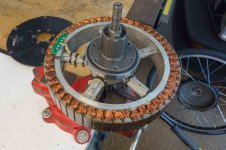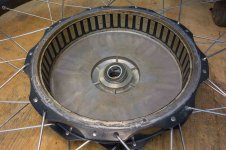macribs
10 MW
- Joined
- Jul 22, 2014
- Messages
- 3,702
Hummina Shadeeba said:Maybe people aren't thinking of their frames as heatsinks. With a connection between the motor shaft and the bike being more designed for heat transfer I bet it'd be better than air. And using air to cool almost always means wind drag
@HS Steel is a poor heat conductor, so transporting large amount of heat from your hub motor via your steel axle into your steel frame will not be as effective as you might think. I would for sure put my work other places to better cool a hub. If you find yourself unsatisfied by FF and air cooling perhaps water cooling or even oil cooling is more for you?
@CD Does the varnish fill too much space in the hub, so that when added FF things are a little tight? Or you think it is the FF itself grinding as the motor turns, no matter if there is varnish or not?







